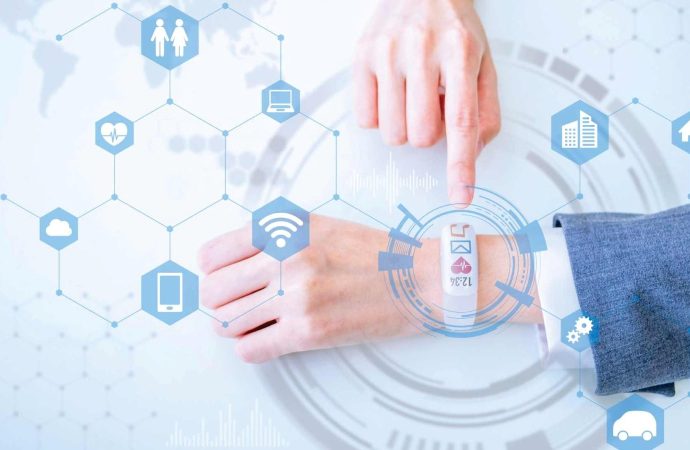Trends in Home Healthcare: Convenience and Innovation The landscape of healthcare is undergoing a significant transformation, driven largely by the growing demand for home healthcare services. This shift is fueled by several factors, including an aging population, the rising prevalence of chronic diseases, and the increasing cost of traditional healthcare settings. As a result, the
Trends in Home Healthcare: Convenience and Innovation
The landscape of healthcare is undergoing a significant transformation, driven largely by the growing demand for home healthcare services. This shift is fueled by several factors, including an aging population, the rising prevalence of chronic diseases, and the increasing cost of traditional healthcare settings. As a result, the home healthcare sector is experiencing a surge in innovation and convenience, making it a pivotal component of modern healthcare delivery. This article delves into the latest home healthcare trends, highlighting the key advancements that are shaping the future of this industry.
The Rise of Telehealth and Tele-medicine
One of the most prominent home healthcare trends is the widespread adoption of telehealth and tele-medicine. These technologies have revolutionized the way healthcare is delivered, offering patients the convenience of receiving medical consultations and treatments from the comfort of their homes. Telehealth encompasses a broad range of services, including virtual doctor visits, remote monitoring, and digital health coaching.
Tele-medicine, a subset of telehealth, specifically refers to the use of telecommunications technology to provide clinical services. This can include video consultations, remote diagnosis, and even virtual follow-up appointments. The COVID-19 pandemic has significantly accelerated the adoption of tele-medicine, with many healthcare providers and patients recognizing its benefits. Telehealth not only reduces the need for in-person visits but also improves access to care, especially for individuals in remote or underserved areas.
Remote Patient Monitoring (RPM)
Remote Patient Monitoring (RPM) is another key trend in home healthcare that is gaining traction. RPM involves the use of digital devices to collect and transmit patient data to healthcare providers in real-time. These devices can monitor various health parameters, such as blood pressure, glucose levels, heart rate, and oxygen saturation.
The data collected through RPM allows healthcare providers to track patients’ health conditions continuously and make timely interventions when necessary. This proactive approach can help prevent complications, reduce hospital readmissions, and improve overall patient outcomes. For patients with chronic conditions, RPM offers a convenient way to manage their health while minimizing the need for frequent doctor visits.
Wearable Health Technology
Wearable health technology is another significant trend that is transforming home healthcare. Devices such as smartwatches, fitness trackers, and wearable ECG monitors have become increasingly popular among consumers. These wearables can track a wide range of health metrics, including physical activity, sleep patterns, heart rate, and even stress levels.
Wearable health technology empowers individuals to take a more active role in managing their health. By providing real-time feedback and personalized insights, these devices can help users make informed decisions about their lifestyle and healthcare. Moreover, the data collected by wearables can be shared with healthcare providers, enabling more accurate and personalized care plans.
Artificial Intelligence and Machine Learning
Artificial Intelligence (AI) and Machine Learning (ML) are playing an increasingly important role in home healthcare. These technologies have the potential to enhance the accuracy of diagnoses, predict health trends, and personalize treatment plans. AI-powered algorithms can analyze vast amounts of data from various sources, including electronic health records, wearable devices, and remote monitoring systems.
One of the key applications of AI in home healthcare is predictive analytics. By analyzing historical and real-time data, AI can identify patterns and predict potential health issues before they become critical. This allows healthcare providers to intervene early and take preventive measures, ultimately improving patient outcomes.

Image by: Yandex.com
Home-Based Diagnostic Tools
Advancements in diagnostic technology have made it possible for patients to perform a wide range of tests at home. Home-based diagnostic tools, such as portable blood pressure monitors, glucose meters, and even at-home lab tests, are becoming increasingly accessible and user-friendly. These tools enable patients to monitor their health regularly and detect any abnormalities early.
For instance, at-home lab tests can be used to check for various conditions, such as cholesterol levels, kidney function, and even certain infections. Patients can collect samples at home and send them to a lab for analysis, receiving results within a few days. This convenience reduces the need for frequent visits to healthcare facilities and allows for timely interventions.
Personalized Care and Treatment Plans
Personalized care is a growing trend in home healthcare, driven by the recognition that each patient has unique needs and preferences. Tailoring care plans to individual patients can lead to better health outcomes and higher patient satisfaction. Advances in technology, such as AI and wearable devices, are making it easier to collect and analyze patient data, enabling more personalized care.
For example, personalized care plans can be created based on a patient’s medical history, genetic information, lifestyle, and preferences. These plans can include customized medication regimens, dietary recommendations, and exercise routines. By addressing the specific needs of each patient, personalized care can improve adherence to treatment plans and enhance overall well-being.
Integration of Smart Home Technology
The integration of smart home technology with home healthcare is another emerging trend. Smart home devices, such as voice-activated assistants, smart thermostats, and automated lighting systems, can enhance the convenience and safety of home healthcare. For instance, voice-activated assistants can be used to set medication reminders, schedule appointments, and even provide health information.
Smart home technology can also improve the safety of elderly or disabled individuals living alone. Devices such as smart doorbells, motion sensors, and fall detection systems can alert caregivers or emergency services in case of an accident. This integration of smart home technology with home healthcare not only enhances convenience but also provides peace of mind for patients and their families.
Enhanced Caregiver Support
Caregivers play a crucial role in home healthcare, providing essential support to patients who need assistance with daily activities and medical care. Recognizing the importance of caregivers, there is a growing trend towards enhancing caregiver support through technology and resources.
For example, caregiver apps and platforms are being developed to provide caregivers with access to educational materials, support groups, and tools for managing care tasks. These resources can help caregivers stay informed, organized, and connected with healthcare providers. Additionally, respite care services are becoming more widely available, offering temporary relief to caregivers and ensuring that they have the support they need to continue providing high-quality care.
Conclusion
The home healthcare industry is experiencing a wave of innovation and convenience, driven by advancements in technology and a growing demand for personalized, accessible care. From telehealth and remote patient monitoring to wearable health technology and AI, these trends are transforming the way healthcare is delivered and managed. As the industry continues to evolve, home healthcare is poised to become an integral part of the healthcare ecosystem, offering patients the convenience and quality of care they need to lead healthier lives.
















